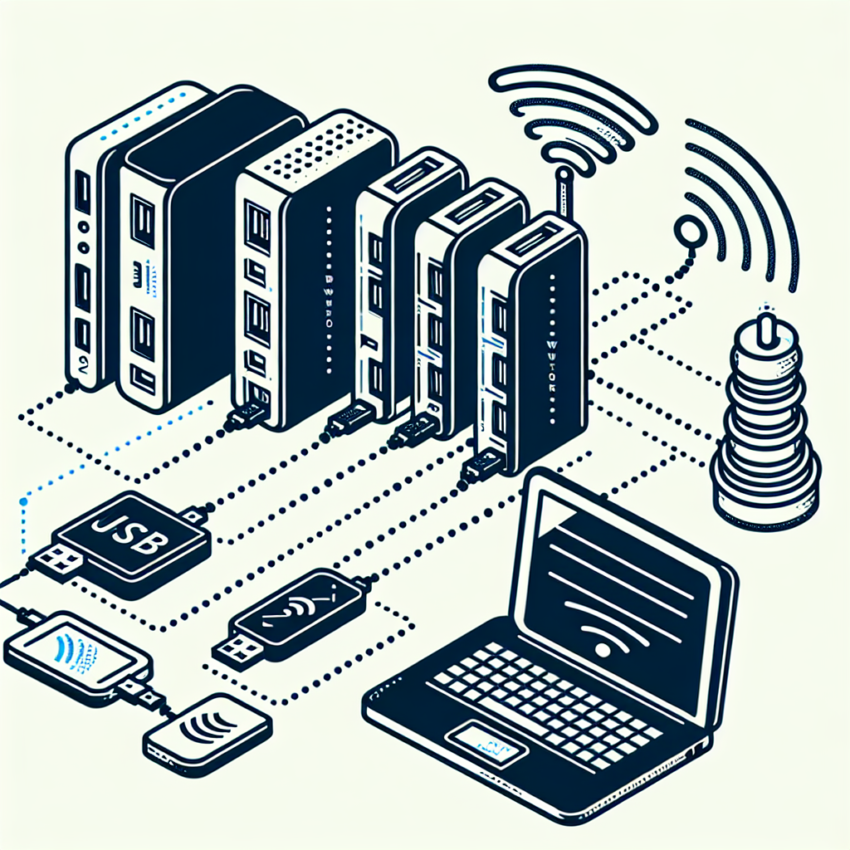In today's interconnected world, the ability to share devices across a network is crucial for seamless operations and flexibility. One common question among IT professionals and enthusiasts is whether a device server can be used to share USB devices over a network. The short answer is yes. Device servers, specifically designed for this purpose, allow multiple users to access and use USB devices over a network efficiently.
What is a Device Server?
A device server is a network device that connects different types of hardware devices to a network. It essentially converts the hardware’s connection type, such as USB, into a network-compatible format that can be accessed remotely. The most common types of connections converted by device servers include serial, USB, and parallel ports.
Types of Device Servers
- Serial Device Servers: Used for connecting serial devices like barcode scanners and industrial equipment.
- USB Device Servers: Specifically designed to connect USB devices to a network.
- Parallel Device Servers: Typically used for connecting printers with parallel ports.
Benefits of Sharing USB Devices Over a Network
Sharing USB devices over a network offers numerous advantages, particularly in organizations where multiple users need access to specific hardware. Below is a table summarizing these benefits:
| Benefit | Description |
|---|---|
| Cost Savings | Reduces the need for duplicate devices for individual users. |
| Convenience | Enables easy access to shared devices without the need for physical proximity. |
| Centralized Management | Simplifies the management and monitoring of devices from a central point. |
| Improved Collaboration | Facilitates the sharing of resources among team members, enhancing productivity. |
How Device Servers Work
The process of sharing USB devices over a network via a device server is relatively straightforward. The USB device is connected to the device server, which is then connected to the network. The device server maps the USB device to a virtual port on the network. Users can access the USB device by connecting to this virtual port from their computers.
Software Requirements
Most USB device servers come with proprietary software that needs to be installed on the client machines. This software facilitates the communication between the client machine and the USB device connected to the device server. Some advanced models also support network protocols like TCP/IP and UDP, making the setup more versatile and robust.
Security Considerations
Sharing USB devices over a network introduces potential security risks. These risks can be mitigated by implementing strong network security practices such as:
- Using firewalls and intrusion detection systems.
- Ensuring the device server supports encryption protocols like SSL/TLS.
- Regularly updating the device server firmware and associated software.
- Implementing user authentication and access control measures.
Best Practices for Optimal Performance
To get the best performance out of your USB device server, consider the following best practices:
1. Network Configuration
Ensure that your network is configured to handle multiple simultaneous connections without degrading performance. Quality of Service (QoS) settings can prioritize traffic to and from the device server.
2. Device Compatibility
Check that the USB devices you intend to share are compatible with the device server. Some advanced USB devices may require specific drivers or software.
3. Firmware Updates
Keep your device server's firmware up to date to benefit from the latest features and security updates.
Popular USB Device Servers
There are several manufacturers that offer reliable USB device servers. Below are a few popular models:
- SEH myUTN-2500: Known for its robust security features and extensive USB compatibility.
- StarTech USB Device Server: Offers simple setup and reliable performance, ideal for small to medium-sized networks.
- Silex DS-510: Features high-speed data transfer capabilities and supports a wide range of USB devices.
Real-World Applications
USB device servers are used in various scenarios, including:
- Medical Facilities: Sharing specialized medical equipment, such as diagnostic devices, between different departments.
- Offices: Enabling shared access to printers, scanners, and other peripheral devices.
- Industrial Settings: Connecting monitoring and control devices to a network for centralized management.
Conclusion
In conclusion, device servers play a crucial role in modern network setups by allowing USB devices to be shared efficiently across a network. Whether it’s for cost savings, improved collaboration, or centralized management, the benefits are clear. By following best practices and taking into account security considerations, organizations can optimize their network environments for the seamless sharing of USB devices.

